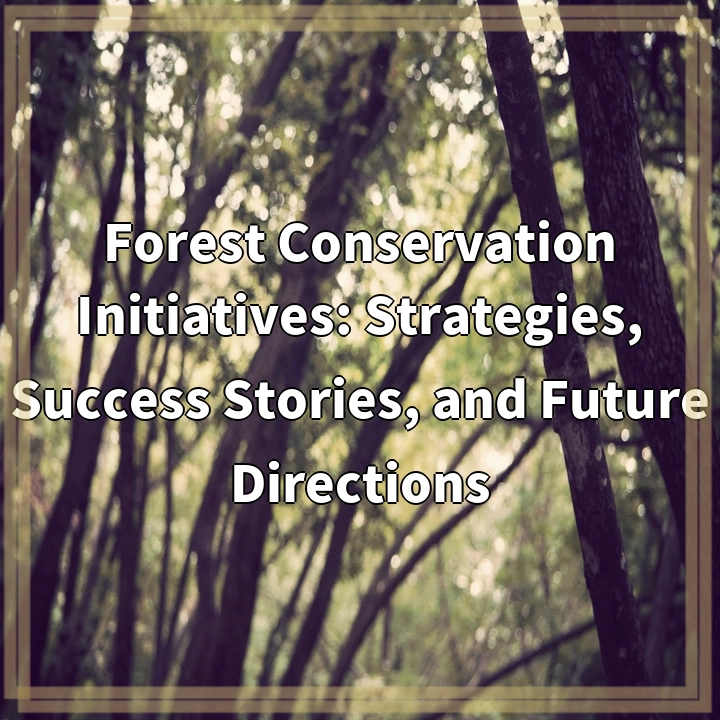
What it is:
Forest conservation initiatives encompass a wide range of strategies designed to protect and sustain forest ecosystems around the globe. These initiatives aim to prevent deforestation, promote reforestation, and ensure the sustainable management of forest resources. Various stakeholders, including government agencies, non-governmental organizations (NGOs), local communities, and businesses, collaborate to implement these strategies.
Forest conservation initiatives can take many forms, including protected area designations, sustainable logging practices, community-based forestry management, and reforestation projects. These efforts not only safeguard biodiversity but also provide essential ecosystem services such as carbon storage, water filtration, and soil stabilization.
Objectives of Forest Conservation Initiatives
The main objectives of forest conservation initiatives include:
- Protecting wildlife habitats and promoting biodiversity.
- Mitigating climate change through carbon sequestration.
- Supporting the livelihoods of local communities dependent on forests.
- Enhancing water and soil quality.
- Bolstering economic opportunities through sustainable practices.
Real-world problems
Despite the critical importance of forest conservation initiatives, several real-world problems hinder their effectiveness.
Deforestation
One of the most pressing challenges is deforestation, driven by agricultural expansion, logging, infrastructure development, and urbanization. This not only leads to the loss of valuable forest cover but also threatens biodiversity and disrupts ecosystems.
Climate Change
Climate change poses a significant risk to forests, altering growth patterns, increasing the frequency of wildfires, and facilitating pest outbreaks. These changes can compromise the health of forest ecosystems and the species that inhabit them.
Economic Pressures
Economic factors often prioritize short-term gains over sustainable practices. Communities reliant on unsustainable logging or agriculture may find it difficult to transition to conservation-based alternatives without sufficient financial support and training.
Policy and Governance Issues
Inadequate governance, lack of enforcement, and corruption can undermine conservation efforts. When laws and regulations concerning forest management are poorly enforced, illegal logging and land encroachment can flourish.
Community Engagement
Successful forest conservation initiatives often depend on local community involvement. However, a lack of engagement or insufficient respect for indigenous rights can lead to conflicts and hinder collaborative efforts.
Biodiversity Loss
As forests are depleted, the richness of biodiversity diminishes. This loss can have far-reaching consequences for ecosystem services, affecting everything from pollination to water purification.

Solutions to Forest Conservation Challenges
Addressing the numerous challenges facing forest conservation requires a multifaceted approach that integrates sustainable practices, community engagement, and robust policy frameworks. Below are some effective solutions that can help promote forest conservation initiatives.
Sustainable Forest Management
Implementing sustainable forest management practices is crucial. This approach balances ecological, economic, and social needs, ensuring that forests can provide resources without being depleted. Techniques such as selective logging and agroforestry can help maintain biodiversity while still supporting local economies.
Reforestation and Afforestation
Reforestation and afforestation projects are essential for restoring lost forests and increasing carbon sequestration. Initiatives that involve planting native tree species can enhance biodiversity and help stabilize ecosystems while engaging local communities in restoration efforts.
Community-Based Forestry
Empowering local communities through community-based forestry initiatives fosters stewardship and incentivizes conservation. Providing training, resources, and equitable access to forest resources can enhance livelihoods while encouraging sustainable practices.
Strong Policy Frameworks
Developing and enforcing strong policies is critical for forest conservation. This includes creating protected areas, implementing stricter regulations against illegal logging, and establishing monitoring systems to ensure compliance. Effective governance can mitigate economic pressures leading to deforestation.
Education and Awareness
Raising awareness about the importance of forests and their ecological services can foster public support for conservation initiatives. Educational programs that highlight the benefits of sustainable practices can empower individuals and communities to take action in protecting their local forests.
Climate Change Mitigation Strategies
Integrating climate change mitigation strategies into forest conservation initiatives is essential. This includes strengthening resilience against climate impacts by maintaining diverse ecosystems and implementing adaptive management practices that can respond to changing conditions.
Partnerships and Funding
Establishing partnerships among governments, NGOs, and the private sector can enhance the effectiveness of conservation initiatives. Collaborative funding efforts can ensure that resources are available for implementing sustainable practices and supporting community engagement initiatives.















